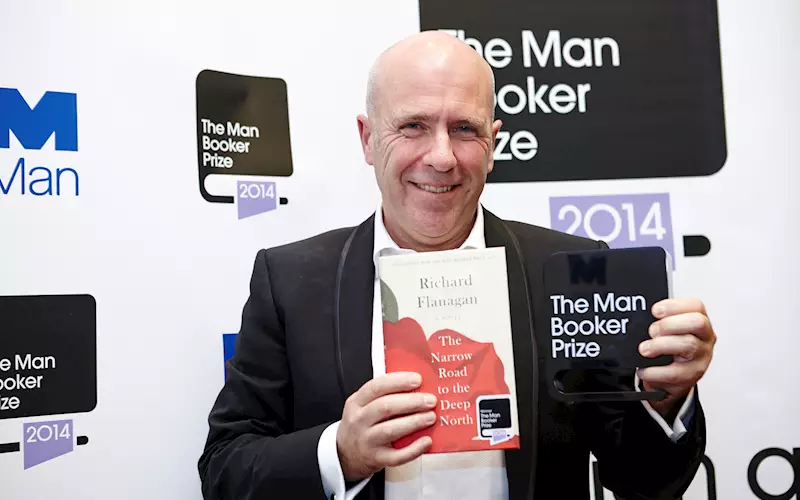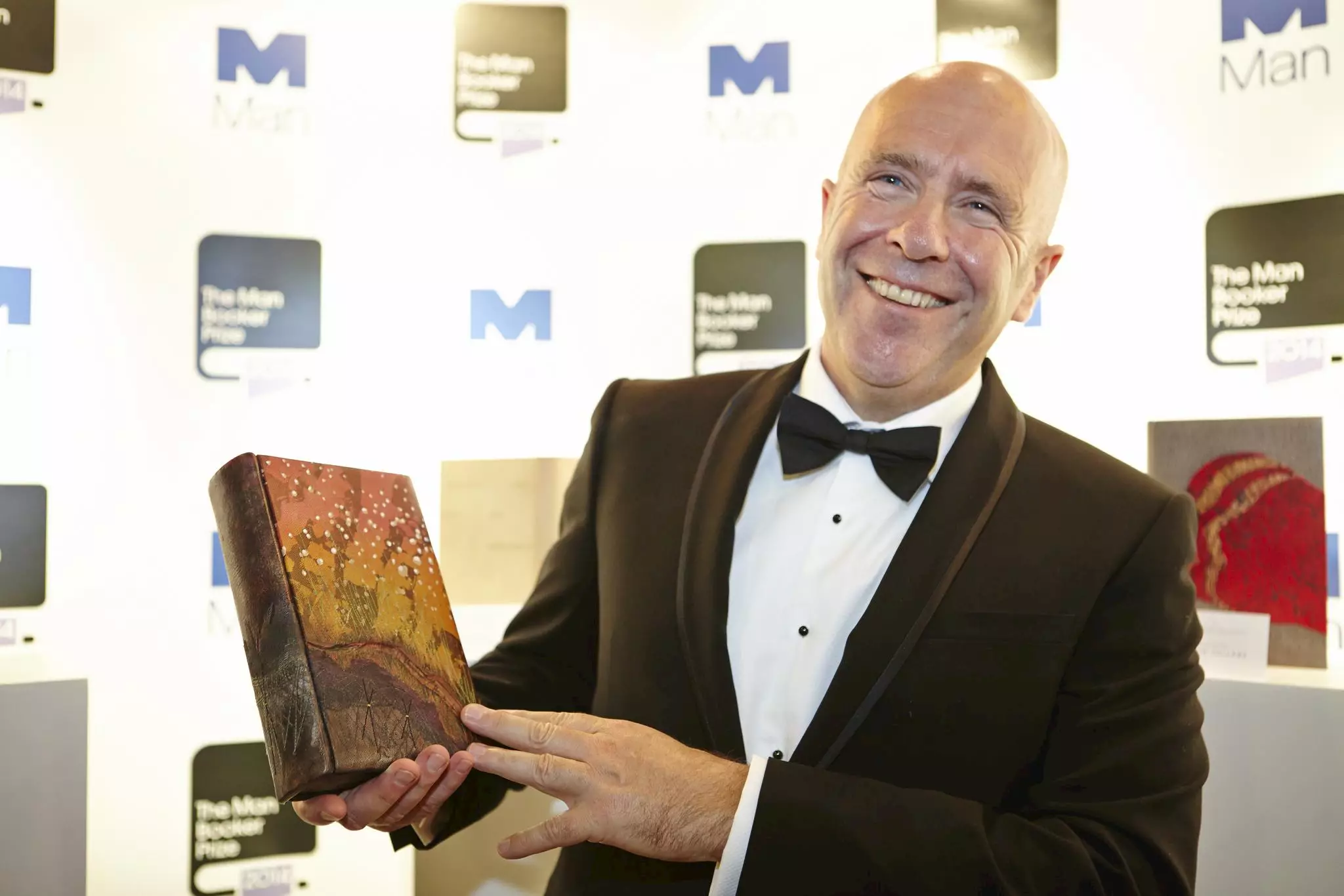Meeting the demands of a Booker-winning title
In a world where the market for printed books is gradually taken over by ebooks, a global literary award like the Man Booker Prize is equally a business opportunity for the publisher of the award-winning book, as it the triumph of the written words.
12 Nov 2014 | By Dibyajyoti Sarma
Traditionally, for a publisher, the Booker Prize is the beginning of a bestselling title. For example, author Hilary Mantel’s winning novels, Wolf Hall and Bring Up the Bodies, exceeded a million copies in their UK editions, published by Fourth Estate. The same way, Granta, the publisher of Eleanor Catton’s 2013 winner, The Luminaries, sold 300,000 copies of the book in the UK and almost 500,000 worldwide.
The rush for the book starts as soon as the award is announced, and ideally, bulk copies of the book should be available with retailers, both physical bookshops and online, and ideally, the award-winning book should sport a new cover or jacket, proclaiming the honour received.
This is how it is achieved, which itself story of remarkable achievement in print.
This year, the Man Booker Prize was conferred on Australian author Richard Flanagan for his ‘savagely beautiful’ novel ‘The Narrow Road to the Deep North’, published by Chatto & Windus (Penguin Random House Group), on 14 October, 2014.
For the publishers and the printers, the work starts much before, from the time the Booker shortlist is announced. The printers for each of the shortlisted book remain on standby, awaiting the results. As soon as the winning title is declared, the press goes on an overdrive, not only printing additional copies, but also printing a new jacket/cover, featuring the ‘winner’ label.
According to Neil Bradford, divisional production director, Penguin Random House, UK, the publisher of this year’s winning title, the weeks leading up to the announcement are the most exciting of the year for publishers. “Preparations are made to maximise the benefits of the victory. ‘Winner’ jacket flashes are designed, approved and put in place. Paper is purchased and delivered, and dummy purchase orders are in place ensuring an immediate response to the news,” says Bradford.
Now, we come to India’s contribution to the Booker Prize.
‘The Narrow Road to the Deep North’ was printed at Replika Press, based in Sonipat, Haryana, winner of this year’s PWI Post-Press Company of the Year award. As soon as the award was announced on October 14, Replika Press was issued the challenge to deliver 18,000 copies by October 17, directly to customers and warehouses in the Delhi area and beyond.
“Frankly, if you can’t get worked up about the Man Booker Prize, you are in the wrong business. I do get worked up about this and expect the same of my suppliers,” says Bradford, adding that Replika stood true to the expectations. The result is for everyone to see, and Bradford is all praise for Replika’s work ethic, not just in the quality of its work, but also for prompt delivery within a tight deadline.
The book is a Demy sewn hardback, 464 pages in length, with a four-colour jacket printed on uncoated paper with embossed lettering. To do this within 72 hours would have been a tall order for any printing press. Replika kept its word and within time, this despite the fact that it was election time in Haryana, which had cut down the manufacturing time to no more than 60 hours.
“Our supplier for the Man Booker Prize Winner 2014 was Replika Press. We knew that they qualified under all the necessary criteria having worked miracles during the period when, first of all, ‘Slumdog Millionaire’ and then the phenomenal ‘Fifty Shades of Grey’ dominated the bestseller charts around the world,” says Bradford.
He lauds the printer’s work ethics, saying, “Replika wiped sleep from their eyes, leapt from their beds and raced into action...” He adds: “I cannot praise enough the efforts and professionalism of Bhuvnesh Seth, his sons Sanandan and Vikaran and their colleagues. Once again they have illustrated the increasingly massive contribution of Indian suppliers to the book publishing world.”
Bradford says Penguin Random House has contracts with both Replika Press and Thomson Press in India for the production of the company’s A, B, Demy and Royal b/w books. The book has been as a hardback and a trade paperback in the UK. Bradford said there will be a B format mass-market edition in 2015, to be printed by UK-based printer CPI.
Explaining the sudden rush to print extra copies of the book, Bradford says, nobody in right mind will hold huge quantities of books in the warehouse in the expectation that they will win. Yet, the winning title immediately generates a great demand, and there are chances that the available physical stock of the book would immediately be consumed. Once this happens, there remains a vacuum until the void is filled by reprint.
“Since the advent of the ebook, gauging the correct number of books has become increasingly difficult. The moment the news of the winning book is released, e-reading devices go in a download frenzy. The key is to have a flexible, responsive and, crucially, dedicated supplier that understands the business, communicates well and reacts to the situation,” Bradford says, adding that Replika stood true to all the expectations.
A ‘magnificent novel of love and war’, ‘The Narrow Road to the Deep North’ tells the harrowing stories of prisoners and captors on the Burma railway during WWII. With the win, Flanagan becomes the third Australian to win the prize, after Thomas Keneally (‘Schindler’s Ark’) and Peter Carey (‘Oscar and Lucinda’, ‘ True History of Kelly Gang’).
Questioning the meaning of heroism, ‘The Narrow Road to the Deep North,’ named after a famous Japanese book by the haiku poet Basho, explores what motivates acts of extreme cruelty and shows that perpetrators may be as much victims as those they abuse. Flanagan’s father, who died the day he finished ‘The Narrow Road to the Deep North’, was a survivor of the Burma Death Railway.
In addition to his £50,000 prize and trophy, Flanagan also received a designer bound edition of his book, and a further £2,500 for being shortlisted.
In the UK, the book was printed by CPI, in the repeat of the Replika story, delivering 80,000 copies within 72 hours.
|
The Replika story Talking to PrintWeek India in December 2013, Bhuvnesh Seth, managing director, Replika, explained the success story. “We supply books which are on par with the international standards. Our quality control is not compromised. Our exports percentage to developed countries, like the UK, the US, and Germany is much higher. We have a strong presence in these countries. Now, over a period of more than two decades we have built a reputation among esteemed international publishers,” Seth said. And the key to impress the international client? “First, you have to honour your word. This contract has to be sacrosanct. Besides, you have to be prompt to communicate, more so, if there is some delay. There should be no room for ambiguity on this score. Needless to st ate, quality and volume play a part. We are successful in meeting these requirements since we have all our operations under one roof. In UK, most publishers are aware of Replika’s body of work,” he added. |
|
Booker trivia
|














 See All
See All